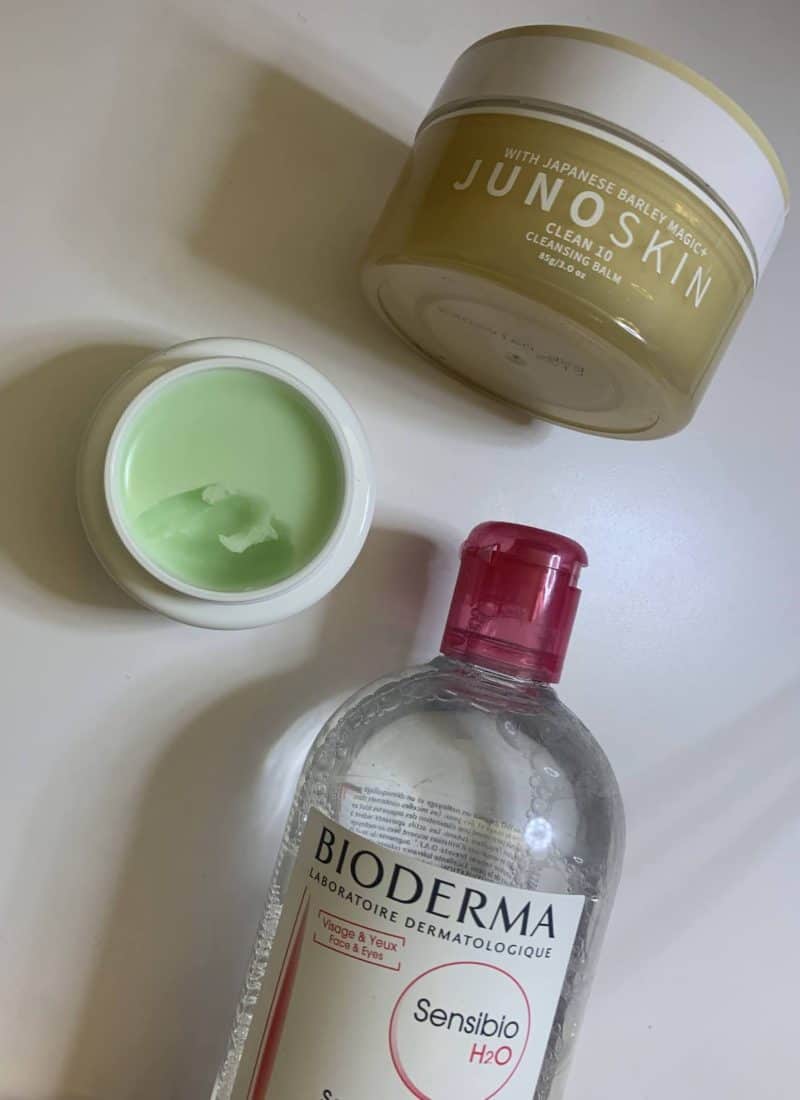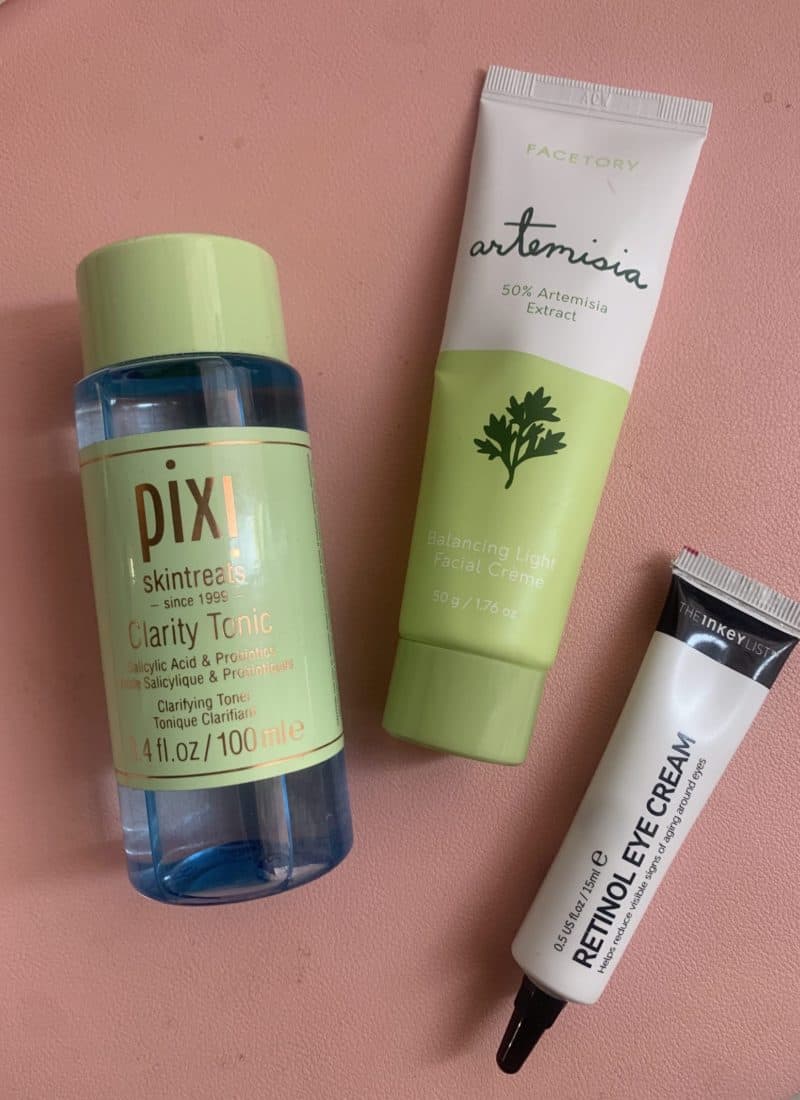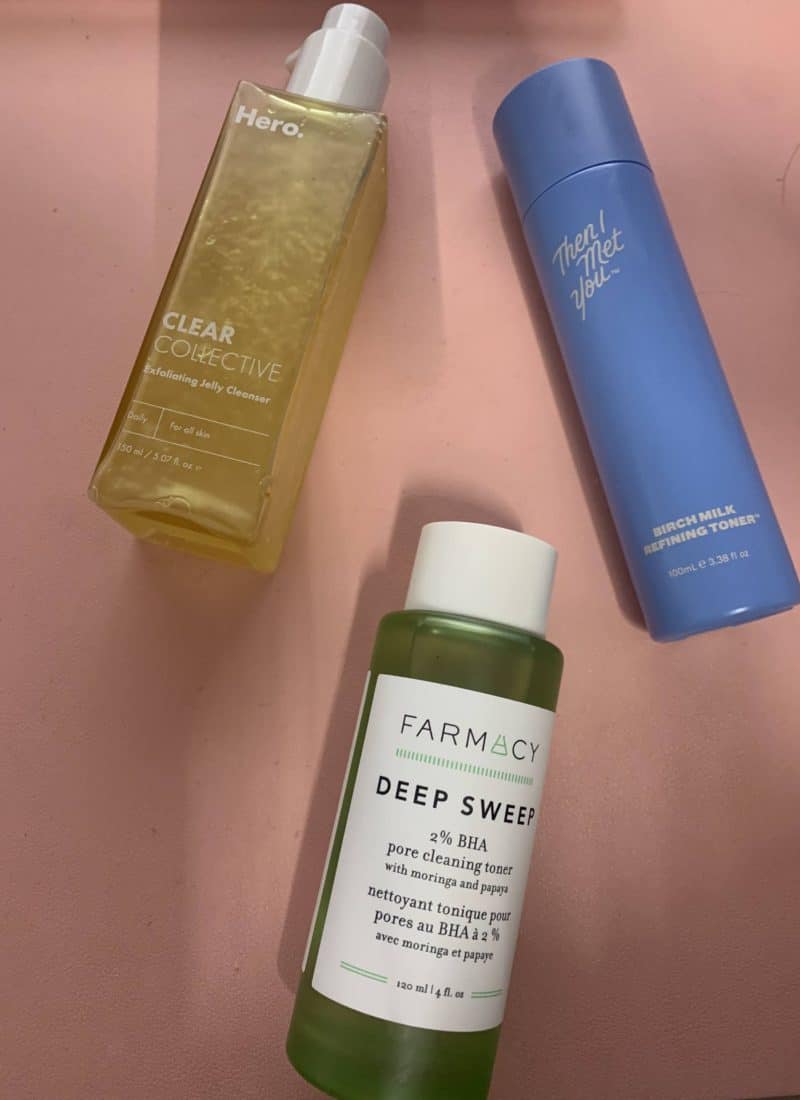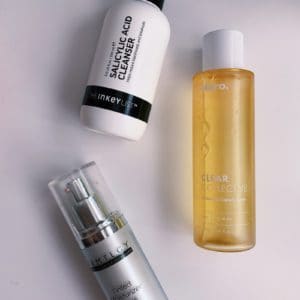If it hasn’t yet been drilled in your head that sunscreen is the most important step in your routine, let this be another reminder. If you’re going to do any step in a routine – apply sunscreen. Sunscreen helps to protect your skin from UVA and UVB rays, which helps to prevent premature signs of aging and skin cancer. A lot of people talk about the importance of sunscreen, but do you know the difference between chemical vs physical sunscreen? Today I’m sharing what you should be looking for with your sunscreen, and what the difference is between chemical and physical ones.
What to look for with your sunscreen

Look for a broad-spectrum sunscreen with at least SPF 30 for daily protection. I recommend looking for an SPF of closer to 50 for that extra protection! SPF 30 blocks 97% of UVB rays, whereas SPF 50 blocks 98%. This small difference can make a big impact, especially if you’re not applying enough sunscreen. I recommend applying at least 1/4 teaspoon for your face, and more for your neck and ears. I use three finger lengths of sunscreen as an easy hack! Be sure to apply liberally and reapply – especially when you’re outside for extended periods of time!
Chemical vs Physical Sunscreen – What’s the difference?
There are two main types of sunscreen filters: physical and chemical. Physical filters include zinc oxide and titanium dioxide, and chemical filters include oxybenzone, avobenzone, octinoxate, and more.
Physical Sunscreens
Also known as mineral or inorganic sunscreens, these tend to be a bit thicker and have more of a white cast. However, they are generally recommended for people with sensitive skin since they tend to be gentler on the skin.
Many people believe that physical sunscreens reflect all UV rays, but this is definitely a myth. They reflect between 5-10% of UV rays then absorb the rest and transform them into heat. The small % of rays they reflect can help with the sensitivity that some people experience with chemical sunscreens.
It can be difficult to find physical sunscreens without a white cast because zinc oxide and titanium dioxide are both white. One of my favorite inorganic sunscreens is the Cetaphil Sheer Liquid SPF 50. I do think it would leave a white cast for deeper skin tones (Instagram review here), but it blends well and leaves a natural finish on the skin.
Chemical Sunscreens
Also known as organic sunscreens, these are usually more cosmetically elegant and have less of a white cast, but they can cause some irritation for sensitive skin and in some cases, cause some stinging for the eyes. These filters absorb UV rays and transform them into heat.
There are a wide variety of chemical sunscreens on the market, some of which I really love! I personally can experience stinging around my eyes when applying chemical sunscreens, so they’re typically not my first choice. However, they’re a great option for those who “hate” sunscreen because they tend to be more lightweight and blendable.
Chemical sunscreens are also great for deeper skin tones since they tend to have little to no white cast. Some of my personal favorites are the CosRx Aloe Sun Cream, Black Girl Sunscreen Kids SPF 50, and the Klenskin SPF 50. There are some amazing chemical sunscreens out there on the market!
Hybrid Sunscreens
There are also sunscreens that use a combination of physical and chemical filters (usually called hybrid or combination sunscreens). These tend to have less of a white cast and can still be suitable for sensitive skin due to the mix of filters.
My favorite hybrid sunscreens are from Drmtlgy (full review here)! These don’t irritate my eyes and blend in easily. Hybrid sunscreens are my personal favorite because they don’t cause irritation for me and still feel lightweight on the skin compared to a lot of physical sunscreens.
Ultimately, physical and chemical filters can both provide you proper protection – it’s all about finding the right product for you. I recommend looking for closer to SPF 50 for more protection, and find ways to reapply your sunscreen! I’ll be sharing a post soon with my favorite ways to reapply my SPF.
Certain product links are affiliate links. I do earn a small commission if you purchase from these links (with no additional cost to you), which supports me and my blog. Feel free to check out all of my affiliate/referral links if you decide to shop. Thank you for your support!



